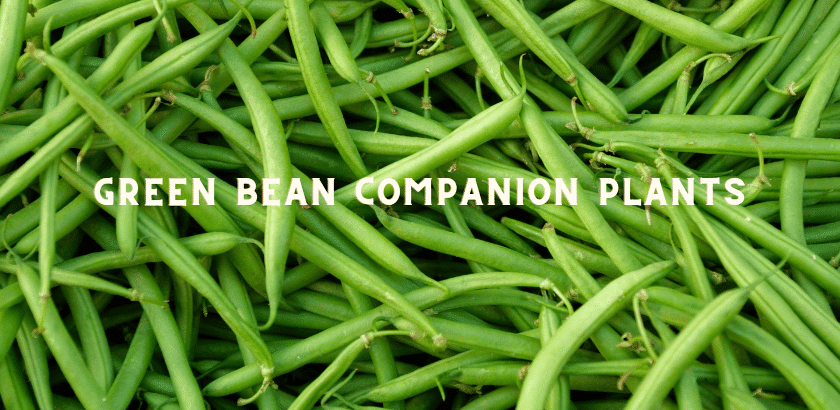In the harmonious world of gardens, green beans stand out not just for their nutritional value but also for their role in companion planting. This approach enhances biodiversity, improves pest control, and boosts overall garden health. Here’s an insightful exploration into green beans and their companion plants, shedding light on the synergies within your garden.
Key Takeaways:
- Mutual Benefits: Certain plants, when grown alongside green beans, can offer mutual benefits such as pest deterrence and improved growth.
- Nitrogen Fixation: Green beans, being legumes, fix atmospheric nitrogen, enriching the soil for their neighbors.
- Pest Management: Companion plants can naturally repel pests or attract beneficial insects, reducing the need for chemical pesticides.
- Diversity Leads to Stability: A diverse planting scheme with green beans and their companions creates a more resilient and productive garden ecosystem.
Good Companion Plants for Green Beans:
The following table lists plants that are beneficial companions to green beans, enhancing growth and pest control:
| Plant | Benefits |
|---|---|
| Marigold | Repels bean beetles and nematodes |
| Nasturtium | Deters aphids and beetles; attracts pollinators |
| Corn | Provides shade and support; green beans fix nitrogen for corn |
| Carrots | Loosens soil around green beans; mutual benefit |
| Lettuce | Green beans provide partial shade; water conservation |
| Peas | Similar nitrogen fixation benefits; good for rotation |
| Spinach | Benefits from the shade and nitrogen fixation |
| Rosemary | Repels bean beetles and improves flavor |
| Potatoes | Green beans deter Colorado potato beetles |
| Cucumbers | Mutual space utilization; complementary growth patterns |
Bad Companion Plants for Green Beans:
Conversely, some plants can have adverse effects on green beans, inhibiting their growth or attracting pests:
| Plant | Reason for Incompatibility |
|---|---|
| Garlic | Inhibits the growth of green beans |
| Onions | Similar to garlic, affects growth negatively |
| Peppers | May compete for nutrients; potential pest issues |
| Sunflowers | Can inhibit green bean growth |
| Fennel | Inhibits growth; attracts pests |
| Beets | Compete for nutrients; root space issues |
| Kale | Competes for space and nutrients |
| Brussels Sprouts | Similar to kale, competition for resources |
| Eggplants | Can attract pests that also affect green beans |
| Chives | Like onions and garlic, can inhibit growth |
Vegetable Companion Plants:
Focusing on vegetable companions, green beans thrive when paired with certain veggies due to shared benefits and pest management synergy.
| Vegetable | Benefits |
|---|---|
| Corn | Acts as a natural trellis; mutual support |
| Squash | Shares space efficiently; pest control synergy |
| Carrots | Loosen soil, enhancing green bean root health |
| Lettuce | Benefits from green beans’ shade; conserves moisture |
| Peas | Shares nitrogen-fixation benefits; good for crop rotation |
| Spinach | Thrives in the partial shade provided by green beans |
| Radishes | Repels pests; green beans can provide shade |
| Beets | While competitive, can be managed with careful spacing |
| Cabbage | Complementary growth; shared pest management |
| Potatoes | Beneficial for deterring specific pests |
Companion planting with green beans not only optimizes space and resources but also fosters a vibrant, self-sustaining garden ecosystem. Embracing this practice can lead to healthier plants, reduced pest issues, and a more productive harvest.
References:
- Szafirowska, Dr Anna, and Kolosowski, MSc Slawomir. “Organic Eprints – the Effect of Companion Plants on Lygus Feeding Damage to Bean.”
https://orgprints.org/id/eprint/12179/ - Finch, Stanley, and Rosemary Collier. “The Influence of Host and Non‐Host Companion Plants on the Behaviour of Pest Insects in Field Crops.” Entomologia Experimentalis et Applicata, vol. 142, no. 2, 9 Nov. 2011, pp. 87–96,
https://onlinelibrary.wiley.com/doi/full/10.1111/j.1570-7458.2011.01191.x
These studies and articles delve into the scientific principles behind companion planting, offering insights into how green beans interact with their environment and neighboring plants, promoting a healthier and more productive garden.
Zaki Infitar is the driving force and creative mind behind GreenBuilt.co. As a self-taught gardener with an unwavering passion for all things green, Zaki’s journey into the world of gardening is a testament to his dedication and love for nature.

